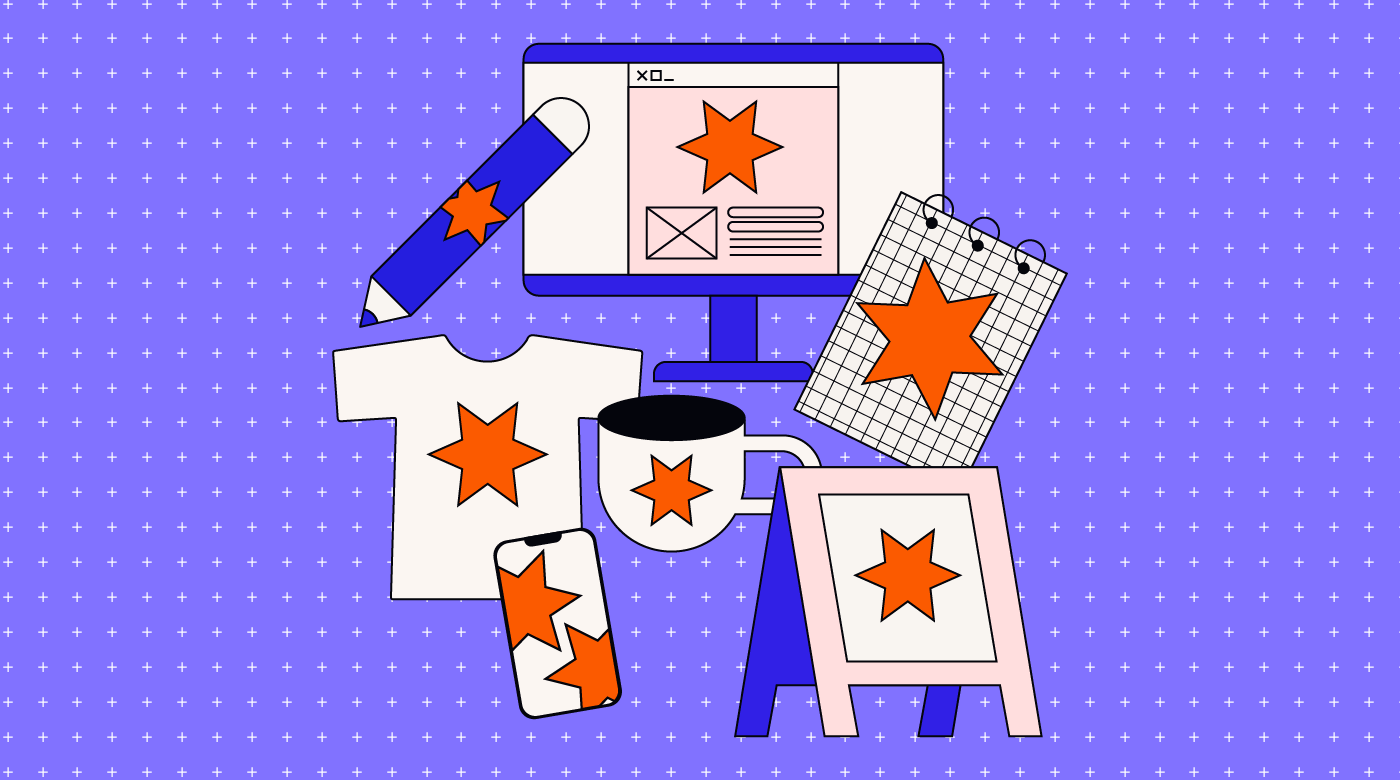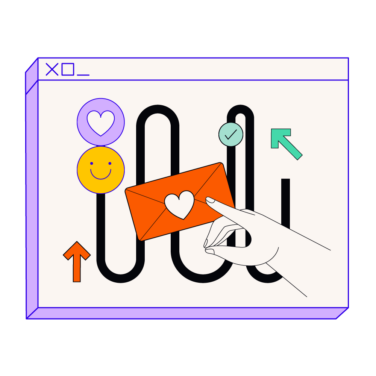When I was ten years old, there was no greater fashion statement than walking through the doors of my elementary school with Nike logos emblazoned head-to-toe. Basketball shorts and t-shirts were the big ones at my school, but you’d see some kids with Nike logos on their hats, shirts, shorts, socks, and shoes. I remember the shorts, in particular. Nike had this way of manufacturing glossy basketball shorts with premium materials, colors that popped, and of course, that iconic logo.
At ten years old, we were walking billboards. What inspired such affinity? Elementary school kids certainly don’t think about the mechanics of how logos, color palettes, typography, and brand experience design make one brand more attractive than another.
But make no mistake: those were the hidden forces at play. If Nike had kept its original company name (“Blue Ribbon Sports”) and invested less in marketing and branding, an entire generation of kids would have gone in another direction.
So, here’s the question for anyone interested in replicating Nike’s success:
What is it, exactly, that generates customer affinity? What are the brand building blocks that take a successful brand from unknown to iconic? In this article, I’ll explore what five of today’s most influential brands did to make customers love them—so you can do the same.
1. Apple
What comes to mind when you think of Apple? Steve Jobs and his black turtleneck giving an iPhone presentation, maybe, or perhaps the head-turning designs of the iMac or the minimalism of Apple’s retail stores.
The common thread across all of these? Design. This is a company that takes product design incredibly seriously. It took five years to build the iPhone X, according to Apple’s design chief Jony Ive. But the result is a smooth, vertically-integrated product experience that gives Apple fans more of what they already love.
Apple’s investment in premium design has paid off. According to Brandirectory’s 2023 ranking of global brands, Apple is the second most valuable brand in the world with a brand value of $297.5 billion dollars—right behind Amazon.
It’s easy to forget this now, but back when Apple launched the iPhone, cell phones were a messy collection of buttons:

The iPhone changed all that, ushering in an era of technology design focused on minimalist form factors and intuitive user experiences.
Even in an era of copycats, Apple has maintained its margins. Apple’s minimalist aesthetic feels premium, and its brand conveys a status that makes consumers happy to pay upwards of $999 for a smartphone. Its design, product packaging, logo, typography, and color palette all amplify the message of simplicity, premium features, and ease of use.

2. Nike
The 2023 movie Air tells the story of how Nike’s executives recruited basketball prodigy Michael Jordan in the face of stiff competition from “cooler” brands like Adidas. At the time, Nike was popular with the running community, but it hadn’t taken off with the broader public to become the cultural phenomenon it is today.
Signing Michael Jordan helped Nike gain serious momentum. By the mid-1990s, I was begging my mom for Nike apparel, along with every other kid I knew. Today, Nike ranks higher in brand value than any other apparel company on the planet.
But even more interesting from a marketing perspective is how Nike took a step beyond celebrity endorsements to connect meaningfully with customers. Starting with its famous “Just Do It” tagline, Nike’s brand messaging become less about the fact that famous athletes wear Nikes, and more about the idea that everyday consumers have great potential for achievement.
Or, as a 2012-era Nike campaign put it: “Find Your Greatness.”
Nike’s brand image isn’t about shoes or hats. Instead, it’s about determination, self-expression, aspiration, and victory. From the Greek goddess of victory, where Nike got its name, to its powerful typeface and distinctive swoosh logo, every part of Nike’s brand identity design comes back to its central mission of encouraging everyday athletes to achieve at whatever level they can.
Nike has done something few other brands have: it’s come to stand for something more than the sum of its parts.
3. McDonald’s
McDonald’s famous “golden arches” sign is visible in over 100 countries. Billions of people have a strong brand association with the restaurant franchise and its signs, logo, color palette, and slogans. As just one example of its cultural impact, the first McDonald’s to open in Russia in 1990 prompted a crowd of 38,000 people.
While McDonald’s may have been one of the first fast-food restaurants in existence, there are a slew of competitors today. So what are the brand elements that continue to make it so appealing?
Nostalgia and playfulness are key to the recipe. McDonald’s worked with design agency Turner Duckworth to rebrand the brand’s visual identity in 2018. What both McDonald’s and the agency identified as key was “feel-good marketing” centered on nostalgia and childhood joy. McDonald’s does an incredible job capitalizing on its deep roots with consumers, many of whom remember demanding that their parents pull off the highway to grab a Happy Meal.
The golden arches logo, yellow and red color palette, and slogans like “I’m lovin’ it” all contribute to a strong brand identity associated with comfort food, happiness, and familiarity.

McDonald’s latest visual identity embraces playfulness even further by consciously allowing imperfections. Fries and buns are placed messily in brand photography and graphics, while the brand’s sans-serif font is curvy, playful, and light.

4. Coca-Cola
Here’s a brand that needs no introduction: Coca-Cola. The first Coca-Cola was served in 1886. Since that time, it’s spread across the world and turned into one of the most recognizable global brands.
During a 2002 trip to rural Guatemala, I saw Coca-Cola logos and on-brand red paint plastered across buildings even in small, remote villages—a testament to Coke’s far-reaching brand recognition and product distribution.
The central pillar of Coca-Cola’s brand identity is happiness. While its slogans have varied over the years, from “Open Happiness” to “Taste the Feeling,” the enduring concept the brand promotes is that Coke is synonymous with happy times.

It’s interesting to watch the marketing of a brand like Coca-Cola. Innovation isn’t particularly important here: the products don’t change often, and when Coca-Cola has tried to tweak the recipe in the past, disaster has resulted. The brand’s logo and colors are iconic, so they don’t change much, either.
Instead, Coca-Cola’s marketing mission is to continue associating its product with happiness in novel ways. The “Share A Coke” campaign was a memorable example of this. Coca-Cola replaced its logo with popular names, encouraging social media shares, increased sales, and a sense of playfulness and fun.

5. Airbnb
When Airbnb launched in 2008, it had two big challenges.
First, the brand had to build trust. The company was inventing an entirely new product category: a marketplace where people would open their homes to strangers. For Airbnb hosts to open their homes to guests, or for guests to stay in someone’s apartment instead of a hotel, they had to feel confident that the experience would be positive and safe.
Second, Airbnb had to answer the question, “Why stay in an Airbnb when you could stay in a hotel?” The answer was community. Airbnb wasn’t just selling a place to sleep; it was promoting unique experiences and a sense of belonging.
Airbnb did plenty on the product design side to foster trust and belonging, but it also happened on the brand identity side. The company's logo—an abstract symbol called the "Bélo"—was designed to communicate its core values of inclusivity and community. Meanwhile, its inviting color palette, dominated by coral and white colors, creates a sense of trust and warmth.
Airbnb’s brand assets are also flexible enough to be easily repurposed for city-specific marketing campaigns, like the one below for Paris, which encourages guests to seek out a more local experience: “Don’t go there. Live there.”
Leaving a Brand Impression That Lasts
If you have any remaining doubts as to the power of branding, I’ll just leave you with this $690 white Gucci t-shirt with embroidered cherries on the pocket:
That’s right. Six hundred and ninety dollars.
If you’re struggling to make a dent in your market, now is the time to refocus on the power of brand identity. The goal isn’t necessarily to mark up your products like Gucci does. (Although if you can, more power to you). Rather, it’s to understand the power that your brand’s personality has on your target audience.
You can use your brand to stoke the fires of nostalgia like McDonald’s, to inspire achievement like Nike, or to communicate elegance and status like Apple. Use these examples as inspiration, and pick the right brand-crafting partners and design thinking tools to support you. Whichever path you choose, make sure your brand stands for something bigger than the product you sell—and make sure your brand’s typography, logo design, color scheme, and tagline support the picture you choose to paint. Seek to create a unique visual language that will speak to your brand’s target persona, spark their emotions, and leave a brand impression that lasts.
Ready to supercharge your brand identity and build customer affinity? Don’t miss the chance to subscribe to our newsletter and get our latest CX tips.





